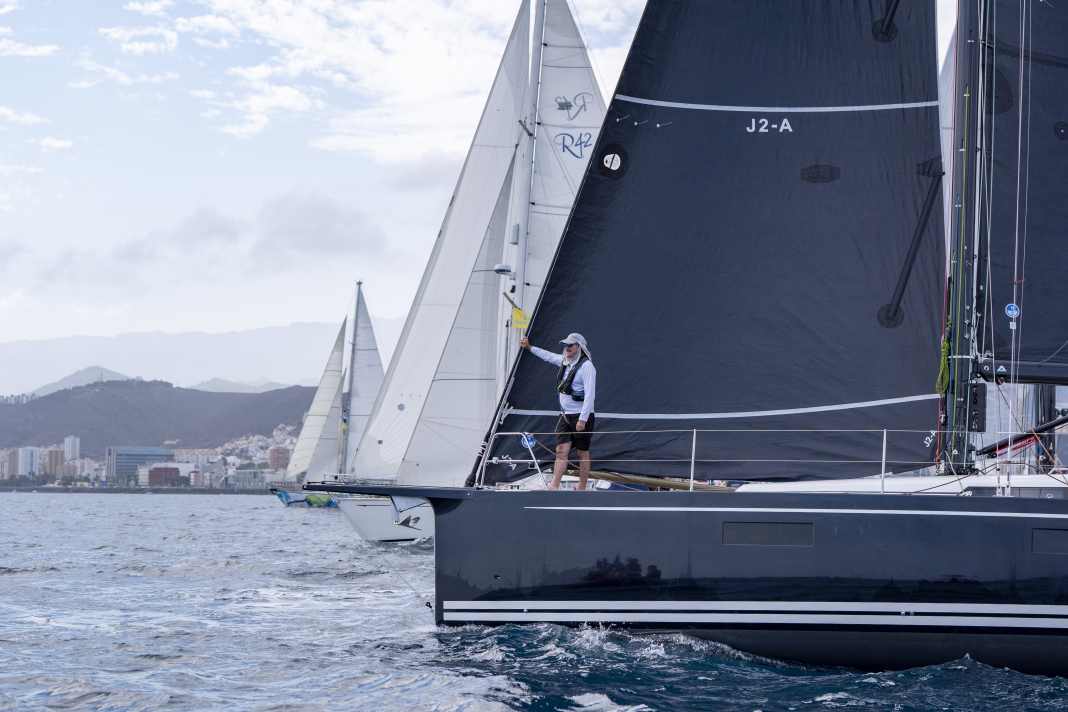





In sunny weather and pleasant temperatures, around 140 crews set off from Las Palmas de Gran Canaria towards the Caribbean on Sunday. Light south-easterly winds of around 10 knots provided ideal conditions for the traditional rally among cruising sailors. The boats started in three different groups: 45 multihulls started the race first, followed by 11 racing yachts. Finally, the 83 cruising yachts set off - including 14 teams from Germany.
Prominent yachts at the start
One of the German yachts is the "CJ Legend", which was built in 1989 for the Whitbread Round The World Race. With a length of 21.76 metres, it is the largest German yacht and is skippered by Gerrit Scheper.
Also from Germany and the oldest ship in the entire fleet is the "Montana", a Swan 48 (Sparkman & Stephens) from 1972, which is sailed by a crew of charter guests who cross the Atlantic under the guidance of experienced skippers. The situation is similar for other boats - such as the "Charisma".
"ARC is a marathon, not a sprint"
According to initial weather forecasts, the fleet is likely to encounter rather light winds at the start. "The sailors' preferred route remains the classic route towards Cape Verde with initially less wind on the direct line to St Lucia," explained ARC weather expert Chris Tibbs.
The managing director of the World Cruising Club, Paul Tetlow, therefore advises using the easy conditions to gain experience and get used to the procedures on board. He said before the start: "The ARC is a marathon, not a sprint." The fleet is expected to reach its destination of St Lucia after 18 to 21 days.
ARC Plus also enters the next stage
At the same time as the ARC fleet took off from Gran Canaria, the ARC Plus fleet also continued its journey towards the Caribbean. The total of 94 yachts from 34 to 75 feet had already left Las Palmas for Cape Verde on 10 November. After a brief stopover in Mindelo on Sao Vicente, they are now continuing their journey to their next destination, Grenada. They are expected to arrive there after 12 to 16 days.
More about the ARC:
Tracking the crews
The ARC is organised by the World Cruising Club. Every year, over a hundred crews use this rally format to make the 2,700 nautical mile leap from Gran Canaria to the Caribbean. Thanks to the fleet network and the route along the trade wind belt, the event is considered comparatively safe. The start is usually at the end of November and the crews need around three weeks for the journey. Click here for the live tracker.
